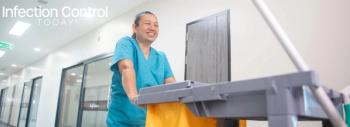
Optimizing Drying for Medical Devices: Insights and Strategies From Cheri Ackert-Burr, DNP
Cheri Ackert-Burr, DNP, BAEd, RN, CNOR, CNS, AGTS, discusses optimizing drying strategies for medical devices, crucial in instrument processing, emphasizing efficiency gains and insights shared at the HSPA Annual Conference.
It is important to gain invaluable insights into optimizing the preparation and drying of lumened medical devices, particularly robotic instruments before they are packaged for sterilization. These strategies are proven to enhance efficiency and effectiveness.
To explain these insights, Cheri Ackert-Burr, DNP, BAEd, RN, CNOR, CNS, AGTS, Clinical educator, North Texas GI Center in Arlington, Texas, presented “Overcoming Barriers When Drying Medical Devices Before Sterilization” at the Healthcare Sterile Processing Association (HSPA) Annual Conference in Las Vegas, Nevada, from April 20 to April 23, 2024. During her interview with Infection Control Today® (ICT®), she discussed her presentation and the importance of attending the annual conference.
I sit on the AAMI committee for flexible endoscope reprocessing. Yes, t 91. As well as high-temperature sterilization and steam sterilization. ST 79. And drawing has been a very big topic for us. And there still continues to be quite a bit of controversy about it. Because people don't understand that there are different parts of drawing and different team members in the process. They say it takes a village. And it does because it's part of the O RS's responsibility, part of the transport, staff members' responsibility, and part of the [sterile processing department’s] responsibility, as well as distribution after the product has been totally processed.
Ackert-Burr explained that in instrument processing, drying plays a crucial role in 3 main areas. Firstly, instruments need to be dried after delivery to the procedure room. Secondly, during the procedure, the scrub person ensures instruments remain moist. Finally, after the procedure, proper preparation by the scrub person ensures ease of cleaning for the technician in charge. Ackert-Burr mentioned a
“Many times as an educator, I'm constantly giving and giving and giving,” Ackert-Burr told ICT on why she continually goes back to the annual conference and why others should too. “And I find that when I come to this, I get filled back up. And it's not just from one person. And the other thing is, I get inspired by ideas that I hear just talking to people at lunch or on break or sitting next to somebody and finding out about somebody and finding out are your problems, the same problems I have—and I have worked all around the world literally. I get the same questions over and over. It doesn't matter what language or what country they're in. They have similar problems. And they have great solutions sometimes.”
Newsletter
Stay prepared and protected with Infection Control Today's newsletter, delivering essential updates, best practices, and expert insights for infection preventionists.






